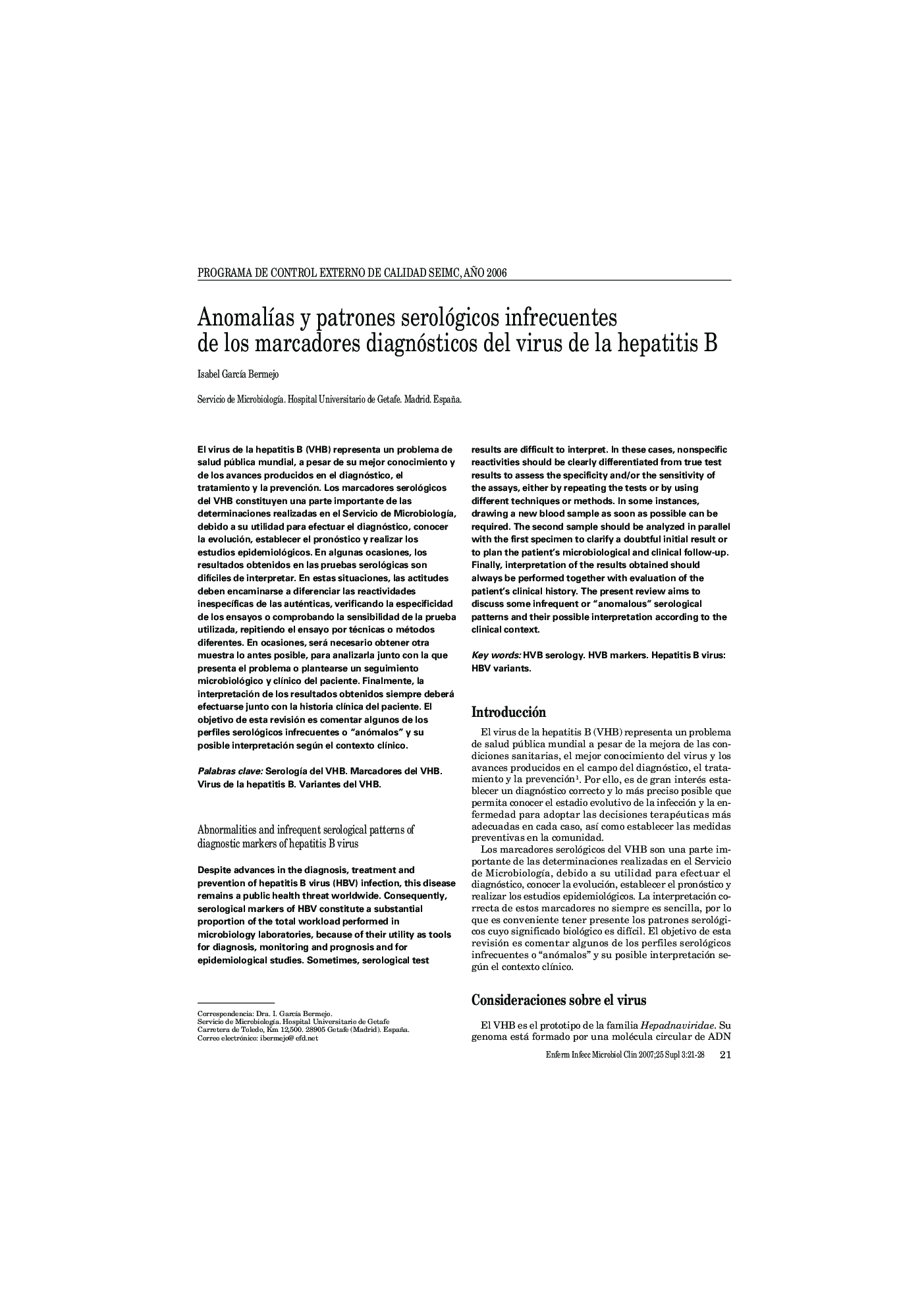| Article ID | Journal | Published Year | Pages | File Type |
|---|---|---|---|---|
| 3403085 | Enfermedades Infecciosas y Microbiología Clínica | 2007 | 8 Pages |
Abstract
Despite advances in the diagnosis, treatment and prevention of hepatitis B virus (HBV) infection, this disease remains a public health threat worldwide. Consequently, serological markers of HBV constitute a substantial proportion of the total workload performed in microbiology laboratories, because of their utility as tools for diagnosis, monitoring and prognosis and for epidemiological studies. Sometimes, serological test results are difficult to interpret. In these cases, nonspecific reactivities should be clearly differentiated from true test results to assess the specificity and/or the sensitivity of the assays, either by repeating the tests or by using different techniques or methods. In some instances, drawing a new blood sample as soon as possible can be required. The second sample should be analyzed in parallel with the first specimen to clarify a doubtful initial result or to plan the patient's microbiological and clinical follow-up. Finally, interpretation of the results obtained should always be performed together with evaluation of the patient's clinical history. The present review aims to discuss some infrequent or “anomalous” serological patterns and their possible interpretation according to the clinical context.
Keywords
Related Topics
Life Sciences
Immunology and Microbiology
Microbiology
Authors
Isabel GarcÃa Bermejo,
